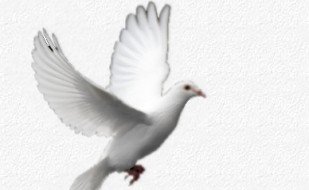The Bosphorus University in Istanbul, the oldest and most prestigious state university in Istanbul, has opened a Peace Education Practice and Research Centre.
The aims of the centre are to have curricula and educational material for all levels prepared by academics, researchers, artists and students in collaboration, to organise peace education for students, educators and NGOs, to give seminars on peace journalism, and to prepare research and publications.
"Understanding requires dialogue"
University Rector Prof. Dr. Ayse Soysal spoke at the opening ceremony on 18 December, saying: "Understanding the differences between individuals, groups and cultures is only possible with dialogue, and dialogue is something that can be learned. Peace education aims at teaching young people how to solve problems without violence, with dialogue."
Media is important
Prof. Dr. Fatos Erkman of the education faculty who will manage the centre said that it was vital that peaceful resolution of problems became more common. She drew attention to the important role of the media. For Erkman, peace education strated with "the individual being at peace with him/herself, and with an education that develops information, skills and techniques to solve conflict and misunderstandings."
Erkan pointed out that the United Nations had declared 2000 to 2010 as Years of Peace Education and hoped that the centre would set an example to other universities and society in general.
"Peace education like preventative medicine"
Nur Bekata Mardin and Jennifer Sertel, both members of the new centre, talked about the foundation and aims of the centre. Mardin likened peace education to "preventative medicine": "If the money spent on armament and war had been spent on teaching people the culture of peace, it would have been possible to create humane, healthy, sustainable and economic solutions to problems rather than using violence."
Mardin and Sertel are also members of WINPEACE, an initiative created by Turkish and Greek women in order to spread peace between the two societies. They gave examples of past peace education programmes with young people and explained that it was possible to change attitudes:
"Young people will get to know their fears, will face their prejudices, will learn to control thier anger, will gain self-respect, a critical perspective and emphathy; they will become aware of human rights and social justice. Some skills can be learnt, can be taught."
War journalism and peace journalism
Assistant Professor Sevda Alankus from the Eastern Mediterranean University in Northern Cyprus informed the audience about peace journalism. She expressed the view that mainstream newspaperstended to focus on war and conflict, created "winners" and "losers", avoided looking at the reasons for conflict and did not offer solutions; thus, one could speak of "war journalism".
Peace journalism, on the other hand, said Alankus, was an approach which reflected efforts of peace and conflict resolution, which focused on reasons for conflict, which tried to let all voices be heard, which humanised the different sides and criticised armes, which did not wait for violence to take place before making a news item, but rather tried to prevent violence. In short, peace journalism was an approach which showed creativity in order to search for solutions. Alankus mentioned bianet as a "good example" of rights and peace journalism in Turkey. (KC/TK/AG)







